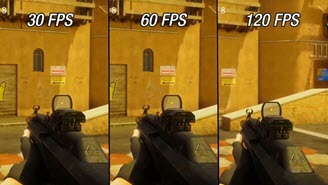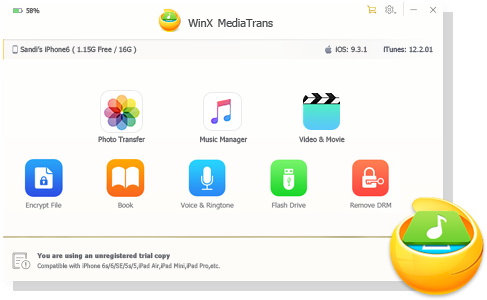From Stutter to Smooth: Unleashing the Power of AI Frame Interpolation
 Kistent Waung
Kistent Waung
Updated on
AI video frame interpolation is a technique that synthesizes new frames between adjacent ones in a video sequence. It has various applications, such as increasing video FPS, enhancing the fluidity of animation videos, generating realistic slow-motion effects, and restoring vintage movies with low frame rates.
AI frame interpolation is an advanced technique that has gained popularity in recent years. In this article, you will learn what AI frame interpolation is and how it can improve the quality and motion smoothness of videos. Are you ready? Let’s explore.

Introduction to AI Video Frame Interpolation
1. What is AI Frame Interpolation?
AI video frame interpolation involves the creation and insertion of additional frames between the existing frames in a video sequence through the utilization of a frame interpolation algorithm. By implementing this technique, the frame rate can be enhanced, such as elevating it from 30fps to 60fps, resulting in a smoother and more lifelike video output. The algorithm assesses the movement of objects in neighboring frames and generates the intermediate frames based on this analysis. A higher video frame rate results in smoother, sharper, and more detailed video playback.
Commonly, there are two types of frame interpolation: real-time frame interpolation and pre-frame interpolation. Real-time frame interpolation refers to generating intermediate frames in a video sequence on the fly, as the video is being played or displayed, to achieve a higher frame rate and smoother motion. This is particularly useful for video games, sports broadcasts, and live events. As for pre-frame interpolation, the process is much more complicated and needs the help of professional video frame interpolation software.

AI frame interpolation software. 47X faster. High-quality.
- Boosts FPS from 25/30fps to 60, 120, 240, and even 480fps.
- Smooths animation & fast-moving videos, and restore old movies.
- Creates slow-motion videos @120fps/240fps to see details.
- One-stop AI toolkit with video upscaler, stabilizer & frame interpolator.
You can also have four types of video frame interpolation based on the algorithms that usually come with AI power. They are flow-based frame interpolation, CNN-based frame interpolation, phase-based frame interpolation, and Hybrid frame interpolation. Each type has more than one specific algorithm, and we will explain them in the following words.
2. Common Technologies for AI Video Frame Interpolation
To interpolate a video from a low frame rate to a high frame rate, it needs one or more specific frame interpolation algorithms. The specialized algorithms and techniques with AI power can quickly estimate motion between frames and generate new frames that fit seamlessly into the video sequence. As of now, there are many AI video frame interpolation algorithm options, and software or hardware developers often choose MEMC (Motion Estimation and Motion Compensation), DAIN (Depth-Aware Video Frame Interpolation), RIFE (Real-Time Intermediate Flow Estimation), DLSS3 (Deep Learning Super Sampling), CAIN (Channel Attention Is All You Need for Video Frame Interpolation), FLAVR (Flow-Agnostic Video Representations for Fast Frame Interpolation), XVFI (eXtreme Video Frame Interpolation), etc. to help interpolate a video and boost video FPS.
There are also many other AI frame interpolation algorithms, including Super SloMo, EQVI, AdaCoF, EDSC, AMD Fluid Motion, BFI, etc.
3. The Advantages and Disadvantages of AI Frame Interpolation
When videos are recorded at a lower frame rate than the desired playback rate, the result motion can appear jerky or choppy. AI frame interpolation addresses this issue by generating new frames that fit in between the original frames, effectively increasing the frame rate of the video and reducing motion judder.

However, video frame interpolation is a complex process that requires algorithms to strike a balance between computational complexity and the accuracy of motion estimation and frame generation. As the technology is not that comprehensive, there are sometimes artifacts or inaccuracies when interpolating video frame, especially in scenes with complex motion or rapid changes. Despite that, the advantages of AI frame interpolation outweigh the disadvantages.
- Increase video frame rate, e.g. 30fps to 60fps, 60fps to 120fps.
- Smooth motion and transitions to remove choppiness or stuttering.
- Enhance the visual quality of videos.
- Budget-friendly as high FPS video recording devices are usually high in price.
- Restore old movies.
- Create slow-motion videos.
- Smooth anime and animation.
- A higher refresh rate for gaming is possible.
- Higher FPS videos can better adapt to high-definition TVs and monitors.
- Loss of cinematic feeling as the cinematic experience that people pursue is associated with 24 frames per second.
- Enormous computational requirements and high hardware demands.
- The algorithms are not mature enough that not all videos can achieve good results.
- Improvement is needed in handling complex and large motion videos; and rotating and fast-moving objects.
- Highly dependent on the quality of input frames. If the input is blurry, the frame interpolation results will be poor.
Usage: AI Frame Interpolation for Silky Smooth Motion
As said, video frame interpolation creates a higher frame rate that can provide more frames to depict the progression of motion and smoothen the transitions, resulting in less perceived choppiness or stuttering. It is particularly useful for smoother and clearer video playback with more details. So, you can use AI frame interpolation technology in the following scenarios.
1. Old movies/videos restoration
24fps is typical for movies. Early films and most Hollywood movies were typically captured at 24 frames per second. Hollywood movies, in the post-production process, will colorize and sharpen movies to 4K resolution and increase the frame rate to 60fps so as to hit the big screen with better image quality and visuals. As for older movies, for example, "2001: A Space Odyssey", directed by Stanley Kubrick, used frame interpolation technology during its high-definition restoration and digital remastering to increase the frame rate to 60 frames per second and then enhance the smoothness of the transitions and visuals.

2. Convert videos to 60fps, 120fps, 240fps, etc.
Common FPS values used in video and film production include 24 FPS (typical for movies), 30 FPS (common for television and online videos), and 60 FPS (used for smooth motion in video games and some high-quality video content). The choice of frame rate depends on the intended purpose and the desired balance between smoothness and the technical resources needed to handle the video data. Thanks to AI frame interpolation technology, it is easy to turn low frame rate videos into 60fps, 120fps, 240fps, or even higher.

3. Smooth anime & animation
In the process of creating and producing animation, the first step is to draw all frames. Then, the animation effects become visible through continuous playback of all frames in sequence. Obviously, drawing all frames is time-consuming. So, with the aid of video frame interpolation, it is possible to create only the keyframes (e.g. 24 frames), which are then used to synthesize the intermediate motion frames. As a result, the 24fps choppy animation can become a smooth 30fps or 60fps animation. Check how to smooth animation/anime >>

4. Create slow-motion videos
60fps is the standard to create a slow-motion video. To create even slower videos, such as 120fps, 240fps, 480fps, and 1,000fps videos, AI video frame interpolation technology is crucial. You can highlight the exciting action scenes in an action movie, slow down plant growth, flower blossoming, animal hunting, lightning, volcanic eruption, sunrise and sunset, cloud movements, etc. in a documentary, or create a video for keeping the millisecond of popcorn explosion, a bullet passing through an egg, water glass, watermelon, and so on.
Besides, you can also use AI frame interpolation technology to help make GIFs, remove duplicated frames, deinterlace a video, improve DVD rips, restore VHS videos, upscale 8mm/16mm videos, and so on.
Part 3. How to Use AI Frame Interpolation?
Now that you know something about the AI video frame interpolation, you can try to enhance your video quality or create a slow-motion video with the help of the technology. To interpolate video frames, you need AI video frame interpolation software. At present, there are mainly three categories of video frame interpolation tools, including frame interpolation-only software, online tools, and video processing software. Each has advantages and disadvantages. To simplify the video frame interpolation process, we choose one example to show you how AI frame interpolation technology makes videos smoother.
Winxvideo AI - AI-powered Video Frame Interpolation Software
Winxvideo AI is an AI-powered and innovative video and image enhancer with AI frame interpolation to convert video frame rates. You can use it to boost video FPS to 60fps/120fps/240fps/480fps, smoothen anime and animation, upscale old movies, and so on.
Video transitions can be fluid due to the frame interpolation function, and video quality can be enhanced with the help of its video enhancement feature. With all AI features of Winxvideo AI applied, you can improve outdated, poor-quality, distorted, or blurry video/image, elevate 720p/1080p to 4K resolution, stabilize shaky video footage, increase frame rate to 120/240fps, etc.
In addition to that, Winxvideo AI is a complete toolkit to help you convert, compress, record, and edit 4K/8K/HDR video utilizing full GPU acceleration.
 Free Download
Free Download
 Free Download
Free Download
Note: AI tools for Mac are currently unavailable, but they're coming soon. Stay tuned.
Step 1. Free download Winxvideo AI, install and launch it.
Step 2. On the main UI, click on the "Video AI" button to navigate to the AI frame interpolation window.

Step 3. Drag and drop a video you want to interpolate frames. Winxvideo AI lets you process more than one video at the same time, including video enhancement, frame interpolation, and video stabilization.
Step 4. On the right part, check the box of "Frame Interpolation", and you can start frame interpolating your video to 60fps, 120fps, 240fps, and even 480fps. Just choose from 2X, 3X, 4X, and 5X to double, triple, quadruple, quintuple the video frame rate.

Check more details about how to use Winxvideo AI frame interpolation feature >>
Step 5. Click on "Export Settings" to specify the output video/aduio codec, quality, and GOP; and choose a destination folder.
Step 6. When everything is OK, hit the "RUN" button to start AI video frame interpolation with Winxvideo AI.
With the help of AI video frame interpolation technology and AI frame interpolation software, it is possible to change the video frame rate from a low to a high level, so as to smooth the transitions of a choppy video or animation and result in a upscaled viewing experience. Even, it is possible to upscale a video quality, like 1080p to 4K. Thanks to AI frame interpolation tool like Winxvideo AI, users with a few technical skills can also boost their video FPS to 60fps, 120fps, 240fps, etc. easily.
 FAQs about AI Frame Interpolation
FAQs about AI Frame Interpolation
AI frame interpolation technology is new and not very mature. So, there are countable AI frame interpolation software tools available. Among them, Winxvideo AI, Topaz Video AI, AVCLabs Video enhancer AI, HitPaw Video Enhancer, SmoothVideo Project, Flowframes, Hybrid, DAIN-App, and SVFI do well in interpolating video frames. After testing, Winxvideo AI and Topaz Video AI perform the best.
This can be achieved with AI-powered video frame interpolation software like Winxvideo AI. You can use such a tool to automatically increase the frame rate of a video by interpolating between frames and creating new frames to fill the spaces between the original.
Motion range is a setting in frame interpolation that determines how much motion is happening within an image. This setting helps the interpolation produce a more believable motion blur. The higher the quality of the setting, the longer the processing time.
Frame interpolation is a process that compares consecutive image frames and inserts intermediate frames between them to create a smooth video. The most popular methods use optical flow to predict the motion for the interpolated frame. The traditional frame interpolation methods often estimate the motion and then compensate for the motion. In recent years, the AI-powered frame interpolation method can have deep learning of the motion video and then insert the necessary frames.
The unit of video frame rate is FPS and FPS stands for "frames per second". It is a measure used in video and animation to quantify the number of individual frames displayed or recorded in one second of time.
For instance, if a video has a frame rate of 30 frames per second (30 FPS), it means that 30 individual frames are displayed or captured in one second of time. The higher the FPS value, the smoother and more fluid the motion in the video or animation appears to the human eye.












